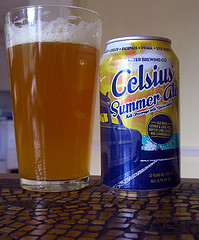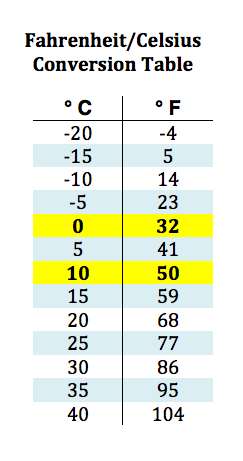The Easy Way to Convert between Celsius and Fahrenheit

Converting between temperatures on the Celsius and Fahrenheit scales is easy. I’ve been doing it in my head for over a decade now. Yeah, I know I’m a weirdo, using the metric system here in the US when no one else does. But if you’ve been reading this blog for a while, you already knew I was odd, especially if you’ve also read my bio over at Green Building Advisor.
Anyway, it’s helpful to be able to convert between Celsius and Fahrenheit if you go to other some other countries…Well, OK, it’s pretty much all other countries. You could, of course, install an app on your phone that would do the conversion for you, but where’s the fun in that?!
Imagine that you woke up today in Atlanta, and all the news outlets were suddenly talking only in Celsius temperatures. Their forecast for the whole upcoming weekend, Friday through Sunday, is for a high temperature of 39° C.
Is that really hot? Is it going to be a gorgeous weekend? Should you make sure your furnace is working? Buy ice?
You could try to remember that equation you learned in school. Let’s see, do I add 32 and then multiply by 1.8? Do I divide by 1.8 and subtract 32? What order do I do that in, and which one is which? Where’s my calculator?!
That’s the hard way, my friend! The easy way is to learn the principles in the table below.

Notice the two lines highlighted in yellow. Those are my two main reference points. I can figure out any temperature I want by skipping along in 5° C increments, each time adding or subtracting 9° F. When a temperature is between the numbers in the table, then I look at which line it’s closest to and add or subtract multiples of 1.8° F for each degree C.
It’s really not that hard. And yes, 39° C really is the forecast for Atlanta this weekend. You should be able to figure out from the table above that that is going to have us living up to our silly nickname: Hotlanta!
Allison Bailes of Atlanta, Georgia, is a speaker, writer, building science consultant, and founder of Energy Vanguard. He is also the author of the Energy Vanguard Blog and is writing a book. You can follow him on Twitter at @EnergyVanguard.
Related Articles
Those Annoying Imperial Units!
The Metric System Is for Lovers—A Valentine’s Day Manifesto
Photo of Celsius Summer Ale by walknboston from flickr.com, used under a Creative Commons license.
NOTE: Comments are closed.
This Post Has 5 Comments
Comments are closed.

Is 5 C to 51 F a typo? Wouldn
Is 5 C to 51 F a typo? Wouldn’t that be 41 F?
Hi Allison,
Hi Allison,
A number of years ago I was in Germany with the Viessmann company and the head of the American office gave me a way to convert that I’ve used ever since. Take the Celsius number, double it, (easy to do in your head), subtract 10%, (also easy), and then add 32 to arrive at the F number. I share this when possible because it seems to work for most people.
Thanks – I enjoy your blog tremendously.
Willie
Ah, merely an embracing of
Ah, merely an embracing of imperfection.
David: Yes
David: Yes, it was a typo, which I’ve now corrected. Thanks for your keen eye for detail!
Willie: Your method is pretty simple, too, and is really just a straightforward application of the formula. It’s not quite as easy when you go the other direction (F ==> C), but still, it’s pretty easy. Thanks!
As a Passive House Consultant
As a Passive House Consultant I find myself constantly working in both the SI and IP world. It is useful to be reminded that the temperatures on the Celsius scale are “degrees Celsius” but temperature differences are typically expressed as “kelvin”. A 1 degree difference on the Celsius scale is equal to a 1 degree difference on the kelvin scale. For example, 20ºC – 15ºC = 5 K (read as 5 ‘kelvins’, not 5 ‘degrees kelvin’). This is why SI U-values are expressed as ‘W/m2/K’ and not ‘W/m2/C’.
I glanced over this difference far longer than I would like to admit.
It is also a worthwhile reminder that the term “centigrade” is now obsolete.
Allison, you are the physics expert, does this all sound about right?